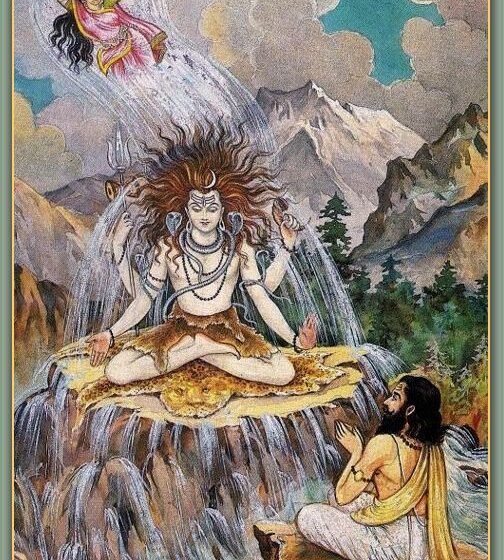Myths, Legends, and Science: Understanding the Significance of the Ganga River

The Ganges is known in India as more than just a river; It is the lifeblood of the nation. India and Bangladesh have for centuries been considered natural and divine, spanning 2,525 km, serving as a vital source of water for millions of people The significance of the Ganges goes far beyond its proximity; It is deeply embedded in the religious, cultural and ecological fabric of India’s spiritual identity. Unfortunately, the river has faced severe pollution due to industrial and human activities. In recent years efforts to clean up and preserve the river have gained momentum, aiming to restore its sanctity and ensure its survival for future generations

Origin of Ganga
Ganga originates from the Gangotri Glacier within the Himalayas, positioned in Uttarakhand, India. It emerges from an ice cave referred to as Gaumukh and starts off evolved as the Bhagirathi River. The Bhagirathi merges with the Alaknanda River at Devprayag, where it formally acquires the call, Ganga. Ganga flows via numerous fundamental cities, such as Haridwar, Varanasi, Allahabad (Prayagraj), and Kolkata, before emptying into the Bay of Bengal. Along its journey, the river supports giant agricultural plains, supplying irrigation, fishing, and an everyday water deliver for hundreds of thousands of people. Numerous tributaries be part of Ganga along its direction, consisting of the Yamuna, Ghaghara, Gandak, and Kosi. Its basin spans an extensive portion of northern India and sustains some of the densest populations within the global. Beyond nourishing agriculture, Ganga is vital for powering towns and industries, highlighting its monetary importance.

Mythology and Religious Significance
Ganges is very important in Hindu mythology. According to legend, the river descends from heaven to cleanse sins. The story of King Bhagiratha, who practiced extreme austerity bringing a river from heaven to earth, symbolizes his power to purify souls and restrain evil deeds. Consequently, the river is worshiped as a goddess and worshiped as “Maa Ganga” (Mother Ganga).
Ganga is also important in Vedic literature, where it is described as a holy water capable of moksha (liberation from the cycle of birth and death). Rituals like bathing in the Ganges, immersing ashes in water and Aarti (ritual worship) in places like Varanasi and Haridwar are believed to bring spiritual benefits. During festivals like Kumbh Mela and Ganga Dussehra, pilgrims from all over India converge on this beach, further emphasizing its religious significance.

Cultural Importance of Ganga
Beyond its religious significance, Ganga is relevant to India’s cultural identity. Its waters are considered pure and are used in diverse rituals and ceremonies across the India. From weddings to festivals, sprinkling Ganga Jal (water from the Ganges) is a not unusual exercise to invoke blessings. The river also evokes art, track, poetry, and folklore inside Indian lifestyle.
Cities alongside the banks of Ganga, together with Varanasi and Haridwar, are appeared as cultural hubs. Varanasi, specifically, is one of the oldest continuously inhabited towns inside the international and attracts thousands of vacationers and pilgrims each year. Ghats like Dashashwamedh Ghat is famous for his or her captivating nighttime aartis, where monks carry out rituals to honour the river in a visually stunning display.
Additionally, Ganga plays a significant position in agriculture, shaping the lifestyles of thousands and thousands who depend on it for farming. Crops which include wheat, rice, and sugarcane thrive inside the fertile Ganges plains, making the river an essential a part of the Green Revolution that transformed Indian agriculture within the twentieth century.

Ecological Significance
Ganga isn’t always only a cultural image however additionally an ecological lifeline. This river supports a various range of wildlife, such as several endangered species, consisting of the Ganga River dolphin and gharials (a type of crocodile). The wetlands alongside its basin provide important habitats for migratory birds, and the river is vital for sustaining ecosystems that depend upon its water go with the flow.
Additionally, Ganga is essential for replenishing aquifers that supply ingesting water. However, human activities such as the construction of dams, pollution, and deforestation have disrupted the river’s herbal balance. Untreated sewage, industrial waste, and agricultural runoff have substantially deteriorated the water fine, endangering both aquatic existence and human health.

Pollution and Challenges
Despite its religious and environmental importance, the Ganges is one of the most polluted rivers in the world. The main sources of pollution are:
- Sewage disposal: Urban areas discharge untreated sewage directly into the river.
- Industrial waste: Industries including textile mills and tanneries dump toxic chemicals along the river.
- Religious Offerings: Offerings like flower idols contribute to pollution especially during festivals.
- Plastic waste: Plastic debris has accumulated, posing a serious threat to aquatic life.
- Bodies and Cremation: Partial cremation or disposal of bodies directly into the river further pollutes the water.

Conservation Efforts
Governments and environmental organizations launched programs to acknowledge the plight of the Ganges.
Ganga Action Plan
Ganga Action Plan (GAP), released inside the 1980s, was the various earliest tries to deal with pollutants. Although it faced challenges because of mismanagement, it laid the groundwork for future efforts
Namami Gange Program
In 2014, the Namami Gange initiative was delivered to rejuvenate the river. This flagship task specializes in:
- Sewage treatment flora to lessen urban pollution
- River surface cleaning to cast off floating waste
- Biodiversity conservation projects for species safety
- Public awareness campaigns to encourage green practices
Community Involvement and NGO Work
Communities and NGOs play an important role in conservation. Projects promoting organic farming and sustainable practices aim to reduce agricultural runoff. Religious leaders and activists came together to promote eco-friendly rituals and spread awareness of sustainable practices.

Conclusion
The Ganges is not just a river; It touches the connection between nature, spirituality and humanity, and is the soul and lifeline of India. It has shaped the history, culture and livelihood of millions of people for centuries and has inspired faith and devotion. However, the challenges posed by technology and pollution threaten its purity and sustainability.
Initiatives like the Namami Gange program and community efforts offer hope, but collective action is needed to restore the river. Balancing modernization and conservation are essential to protect the lake for future generations. The river teaches us that water is life, and that it is not only stewardship, but also responsibility.
By reviving the Ganges, we are protecting a powerful symbol of faith, culture and hope for millions of people and an important environment Moving forward, the future of the Ganges depends on the actions we take today on. The river must be treated with due respect to keep its water clean and sustain life for centuries to come.


